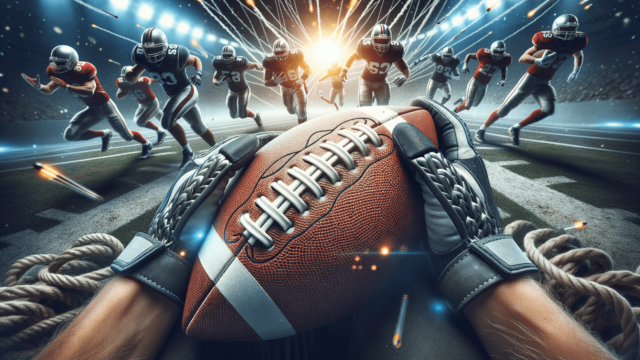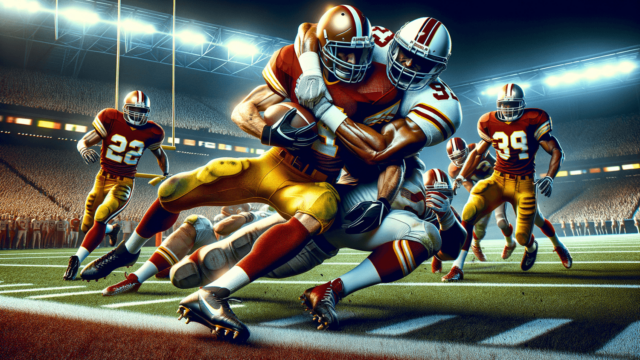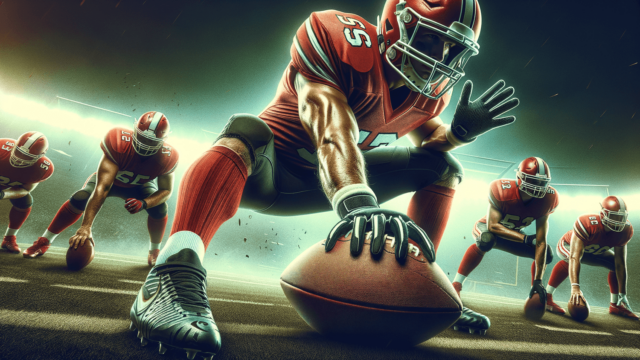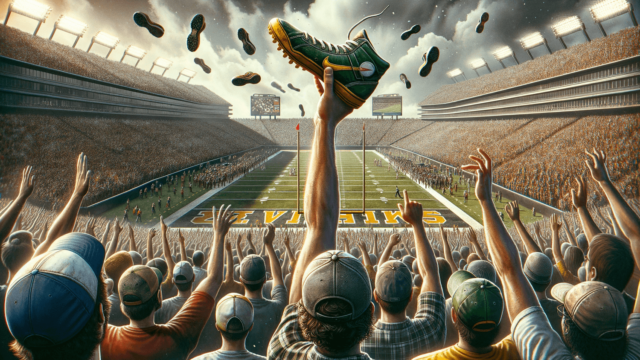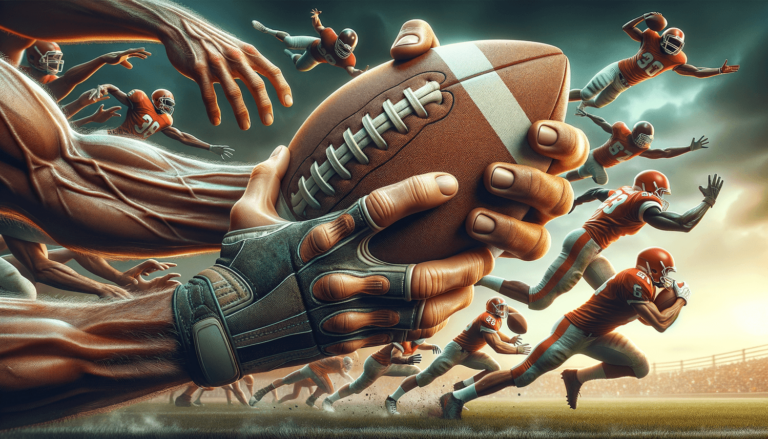
To hold a football correctly, place your fingers on the laces and ensure proper grip with the palm. Your ring and pinky finger should be placed on or near the second to last lace, with your index finger and thumb gripping the opposite side to help with control and spin. Find a comfortable positioning of your fingers and keep a firm but relaxed grip on the ball.
Importance of Proper Football Grip
Learning how to hold a football correctly is critical for accurate passing, better control, and optimal spin while throwing. Improving your grip technique can lead to enhanced performance on the football field.
Step-by-Step Guide to Holding a Football
Step 1: Find the Laces
Locate the laces on the football. They play a key role in providing grip and control while throwing.
Step 2: Position Your Fingers
Place your ring and pinky finger on or near the second to last lace. Your middle finger should rest on the next lace, with your index finger and thumb gripping the opposite side of the football for added control and spin.
Step 3: Ensure Optimal Space
Maintain a small gap between the palm of your hand and the ball. This space allows the football to spin more easily when thrown, offering increased accuracy and distance.
Step 4: Achieve a Firm but Relaxed Grip
Grip the ball firmly enough to maintain control, but avoid squeezing it too tightly, which can lead to poor performance and reduced accuracy. A relaxed grip allows for better spin and smoother releases.
Tips for Perfecting Your Football Grip
Practice Makes Perfect
Practice gripping and throwing the football regularly to enhance your technique, control, and consistency.
Adjust Grip for Weather Conditions
Be mindful of different weather conditions and alter your grip accordingly to maintain control in various circumstances, such as rain, snow, or high humidity.
Customize Your Grip
Remember that every quarterback is different, and personal preference is essential. Experiment with slight adjustments to your grip to find what works best for you.
Analyzing Different Football Grips
Various quarterbacks hold the football in slightly different ways, some of which have become famous. Studying these gripping styles can help you understand how minor adjustments can impact your throw.
Wrist Angle and Finger Placement
The angle of your wrist, along with the positioning of your fingers on the laces, also plays a crucial role in your throw. Experiment with different wrist angles and finger placements to enhance your throwing abilities.
Stability and Accuracy with Proper Follow-Through
Having a proper follow-through is just as essential as holding the football correctly. A stable follow-through ensures better accuracy and power, and it begins with the right grip.
Rreadiness to Change Gripping Style
Throughout your football career, your gripping style may evolve due to factors such as injuries or changes in your throwing mechanics. Being open to making adjustments can help you continue to perform at your highest level.
Finding Balance Between Speed and Comfort
Effective quarterbacks find a balance between releasing the ball quickly and maintaining a comfortable grip. It’s essential to ensure that your grip allows for both easy ball release and an accurate throw.
Strength and Conditioning for Improved Grip
Develop your hand and arm strength through exercises and conditioning, which can lead to a more stable and effective football grip. Consistent strength training increases overall control, pass velocity, and accuracy.
FAQ Section: Mastering the Art of Holding a Football
In this FAQ section, we will address common questions related to the process of learning how to hold a football properly, providing further guidance on achieving the perfect grip.
How long does it take to master holding a football?
Mastering the art of holding a football varies from person to person and depends on factors such as individual skills and experience. With consistent practice and focus on grip technique, improvement can be noticed within a few weeks to a couple of months.
What can I do if I am having difficulty gripping the ball with the correct technique?
If you’re struggling with the recommended grip technique, try adjusting your finger placement or wrist angle slightly. It’s essential to find a grip that feels comfortable and natural to you while still maintaining control and accuracy.
Does hand size affect my ability to hold a football?
Hand size can play a role in how you hold a football, as larger hands provide more gripping surface area. However, players with smaller hands can still develop an effective grip by focusing on finger and wrist positioning and strength training.
How can I practice throwing a football on my own?
To practice throwing a football on your own, you can use a net or a target as a receiving point. Focus on your grip, wrist angle, release, and follow-through while practicing. You can also record your throwing sessions to analyze and refine your technique.
Do I need to learn multiple gripping styles based on weather conditions or other factors?
While it’s not necessary to learn multiple gripping styles, it’s beneficial to be adaptable to different weather conditions. Experiment with slight adjustments in your grip to maintain control and accuracy during rain, snow, or high humidity.
Featured Posts
- No pillar pages found.
